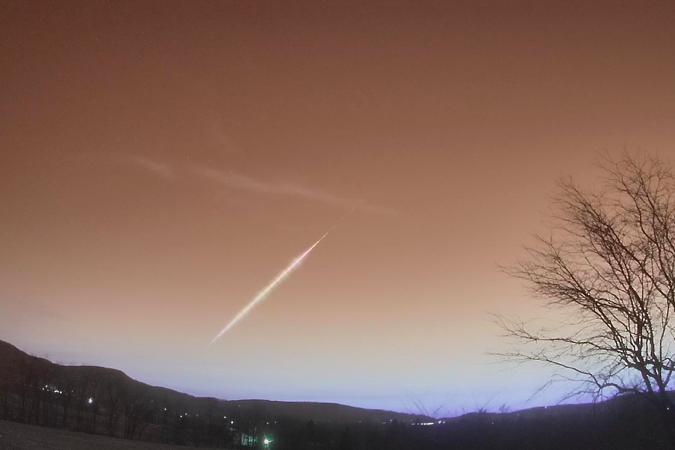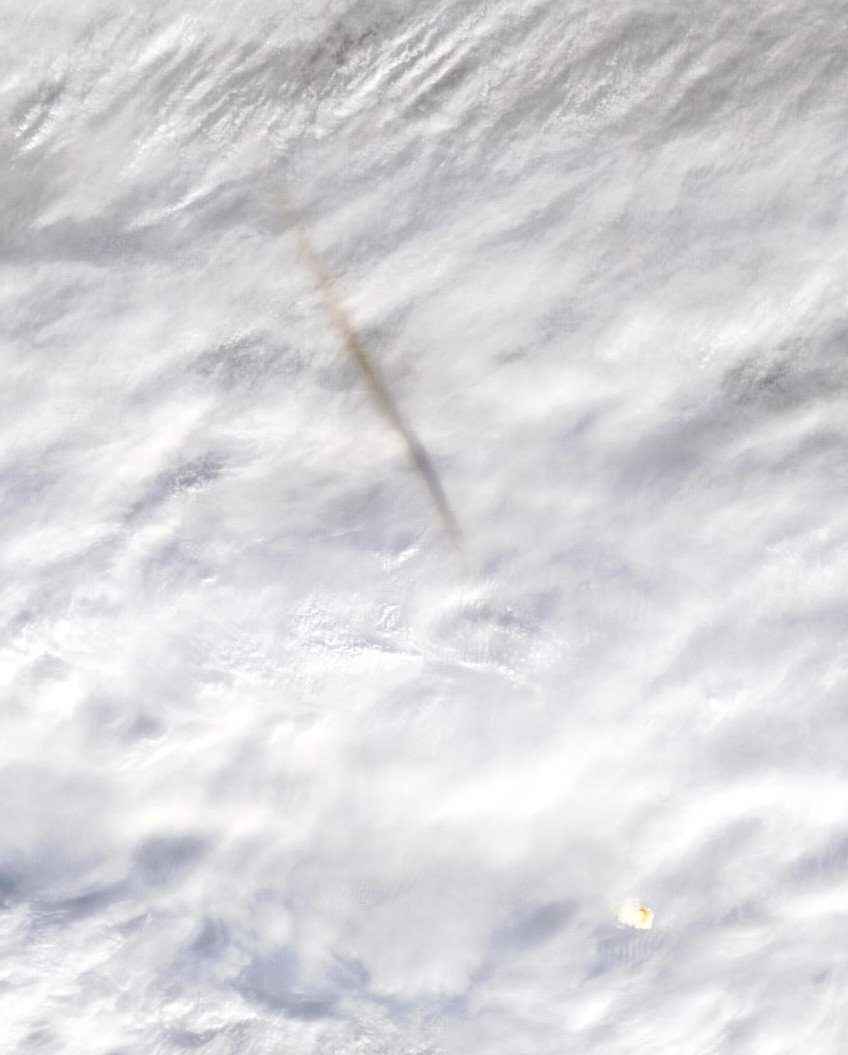OF THE
TIMES
"I would imagine it was pretty quick. I nearly missed it because it was at the end of the exposure."Photo sparked social media debate
"That flash that's been captured is a very, very bright meteor - it's what we'd call a 'fireball'. It probably lit up the countryside."Mr Finlay - a former industrial chemist who has been studying astronomy from an very early age - said the flash was created by a "small rock from space, blazing through the atmosphere, creating friction with the atmosphere".

#Fireball caught over Elmira Corning Regional Airport, NY last night.
— AMSMETEORS (@amsmeteors) March 19, 2019
68 reports so far: https://t.co/ZHOkMko7UX
If you saw this event, please report it: https://t.co/N0EuOVkOgj pic.twitter.com/QQVTB5DOYA


Another bright fireball, the second in a week, was spotted in UAE skies late Tuesday night (March 12) at around 11:50pm, local time.
This is actually the second fireball to be spotted in the UAE skies in one week, after the first one appeared on Tuesday night, March 5, at exactly 7:40:11, according to a senior official.
Eng Mohammed Shawkat, Director of the International Astronomy Centre Abu Dhabi, told Khaleej Times that investigations and calculations are underway to identify the route, altitude, speed, and expected location of the new meteor.
"The Centre has received many calls from eye witnesses who affirmed that they did see that bright fireball in the UAE sky late on Tuesday night."
This is actually the third meteor to be spotted in the UAE skies since the Centre was founded in 2016, he pointed out.
"The first super bright fireball was recorded on October 1, 2016, the second on March 5, and this is the third on March 12."
The new meteor, as was the case with last week's fireball, has been recorded by a special network of astronomical cameras, he added.
"These sophisticated cameras have been installed by the International Astronomy Centre at different parts of the country, and these are managed in collaboration with the US space agency NASA."
The network consists of several stations, each having 16 astronomical cameras pointed at the sky at all times, he elaborated.
"These automatically record any meteor(s) that appears in the sky, sending high definition clips to the station they are connected to, which are instantly transferred to the main center in Abu Dhabi."
Possible parts of burnt meteor located
Meanwhile, a team of experts from the Centre have managed to locate possible parts of the burnt meteor that fell in the UAE desert last week, Eng Shawkat exclusively told Khaleej Times.
"A team of four groups have been dispatched to the expected site of the meteor that fell on Tuesday."
Each and every group, equipped with special scan and search gadgets, was assigned to excessively search a particular area, he added.
"The 3.5-hour-long search, from 2:30pm to 6pm, ended in finding two possible samples; the first was a dark rock, while the second was a rock mixed with rusted iron."
On the spot tests showed some magnetic traits of the second sample, he explained.
"The experts at the centre immediately contacted NASA and shared the pictures of the samples collected."
The second sample of rust iron rock is mostly of an old meteor, he underlined.
"However, the Centre experts are to move to the second stage - and lab test the sample to identify its content and nature."
The first super bright fireball has been video recorded by two astronomical cameras; one fitted at the Ramah station, and one at the Al Wajan station, Eng Shawkat stated.
"Based on these calculations, the meteor was found to have been orbiting at a distance of 384 million km off the sun."
"The meteor was travelling at a speed of 67,000 kmph when it entered the Earth's atmosphere."
The object started burning at an altitude of 93km from the Earth's surface between UAE's Al Qooa and Umm Al Zamul areas, he pointed out.
"It then flew to the northwest when the fire came to an end at an altitude of 35km close to Razeen area."
Eng Shwkat added that the meteor might not have entirely got burnt. "Parts of the meteor, mostly 2 to 10gm, have most likely reached the UAE desert, close to the Arabian Nights Village Resort."
Comment: Last week another streaking fireball, believed to be meteorite, was spotted over Gadsden County, Florida.